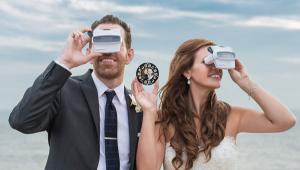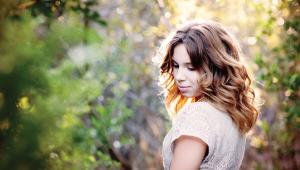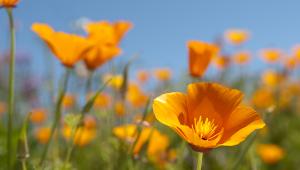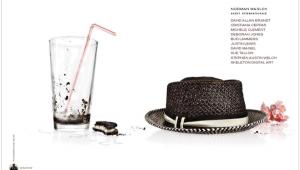Staff Jobs For Photographers: On The Payroll For Pictures
The staff photographers who I spoke with are Mike Bizelli, formerly with Ralston Purina Company; Glenn Carpenter, Moraine Valley Community College, college photographer imaging specialist; Sean D. Elliot, The Day Publishing Company, chief photographer; Lucas Jackson, Reuters, staff photographer; Melina Mara, The Washington Post, national political staff photographer; Larry W. Smith, European Pressphoto Agency/EPA, staff photographer/Dallas; and Eliot VanOtteren, Sea Island, staff photographer/marketing. Please see the end of this article for Internet resources where you can see more of their work.
(Author’s emphasis added in italics—Editor.)

Shutterbug: One question I always get asked about staff work: how did you get your job? What was it in your resume or experience that got you hired?
Lucas Jackson: There is huge competition in the industry today, with countless photographers vying for work at an established news agency like Reuters. Staff photographers are handed a range of assignments, need to be able to shoot different events and to work in different conditions. You also need a very flexible schedule. Some weeks are planned in advance and you know exactly what you will be working on. Others are less so, as you have to be there to cover news when it breaks. Making plans outside of work is something that comes with a caveat. Sometimes you have dinner plans that end up being canceled because you have to fly to Iceland. It can be a wonderfully thrilling job, but you need to be comfortable with the element of surprise and unpredictability.
My own big break was the Michael Jackson trial in Santa Maria, California. It was a freelance assignment that ran for a couple of months and through that I met a lot of other photographers and people within Reuters. More than anything else, it let me prove that I could deliver quality images quickly and it helped me build important relationships that later would lead to this job.
My main advice would be if you have an opportunity to cover a news event that is local to you, do it! Then offer the photos to photo editors. They need to know who you are and what you can do. That is an easy way to introduce yourself and make your name known. Remember, you can find us a lot easier than the other way around.

Glenn Carpenter: The position was advertised in the print media. So, I followed the usual process of a cover letter and resume. Your resume and education will get you past the Human Resources department to an interview with those who care about your portfolio.
Your portfolios are very important and need to be job specific. If you are applying for a position that requires scientific imagery, have that in your portfolio. Research the company before you apply and if necessary add images to your portfolio that meet the needs of the potential employer. To really impress, have tear sheets or links that showcase your photography. I had all these and was told it was the key to my being hired.
Sean D. Elliot: I was three months into a 10-month internship in Bridgeport, Connecticut, when The Day advertised on the NPPA job bank for a “digital imaging technician.” The newspaper had a very good reputation in the state so out of curiosity I applied for the position.
While the job was designed to be a night-shift tech sort of job, with some photo editing, I told the photo editor I would be interested with the understanding that my ultimate goal was a staff photography job. The advantage of working 4pm to midnight was that I had days free to shoot. I chased spot news whenever I could. I shot sports on my own time, all in an effort to endear myself to my bosses. Less than a year after being hired one of the staffers at the paper retired. I prevailed in an open hiring process and became a staff photographer.
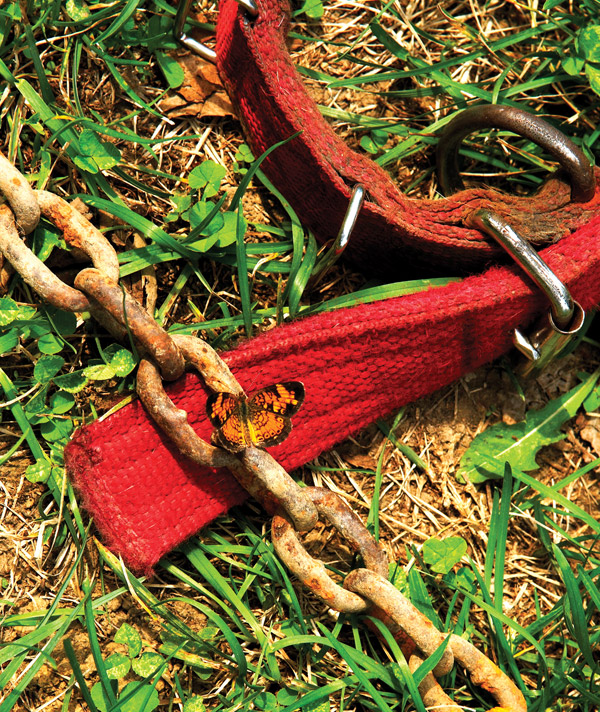
Eliot VanOtteren: I am a Savannah College of Art and Design graduate with a Bachelor of Fine Arts degree in photography. This experience, along with photo assisting and recent client work, had laid a solid technical and creative foundation on which I could build. A 10-week photography internship at Savannah Morning News had given me a taste of fulfilling multiple daily assignments, and being a part of a large team with many moving parts. Additionally, I had supplemented my income as I built my business shooting weddings and portraits for the contract resort photographer at Sea Island. This allowed me to gain familiarity with the property, its culture, brand, employees, guests, and members. I had also developed a great deal of valuable relationships among clients and fellow creatives who were glad to provide a reference to my character, work, and professionalism. (This goes a long way!)
Lastly, I had learned a great deal about production as an independent shooter. I was prepared to manage and direct projects, from scouting and casting talent to retouching and archiving. Through my client work, and personal projects, I had built a well-rounded portfolio which I hoped would make an impression on the marketing team at Sea Island. To summarize, formal training, professional experience, familiarity with the resort, reliable references and testimonials, and a passion for photography all worked together to put me in a position to be hired as staff photographer at Sea Island.
Mike Bizelli: I worked at Ralston Purina Company (now Nestlé Purina) in St. Louis from September 1977 until September 1995. My job title was “photographer.” I think the secret to getting the job at Purina was persistence. I found out who was in charge of the department and went after him. I had two interviews and after the second I called once every 10 days. It took about two months. When I got hired, their photo department consisted of two other shooters; one traveled constantly, one shot portraits and products in an archaic studio using hot lights. My initial assignments were confined to the lab. I was promised an opportunity to shoot and that came true within six months. I started traveling a bit shooting people and animals for in-house publications, “filmstrips,” sales brochures, meetings, events, and public relations.
The department had artists, designers, and art directors constantly working on packaging, promotions, brochures, annual reports, and other publications and we could shoot for any department in the company.

Melina Mara: The Washington Post hired me after the director of photography, Joe Elbert, knew of an exhibit I had at the Smithsonian on women in American politics. He then spoke to a Washington Post staff photographer who had worked with me, who urged Joe to hire me. Plus Joe called the references on my resume at other newspapers I had worked for on the West Coast and the Midwest.
When hired at The Post, my resume listed about five newspapers where I had worked, freelancing, exhibitions, and a book that had recently come out. The Post frequently looks for people with a lot of experience and some cache. To get my job there I pushed those higher cache items in the resume. I had an all day interview. They flew me in from Seattle, and I interviewed from the managing editor on down. I went into those interviews with a vision for the national political photographer role they would be hiring me for. I also did my homework on The Post and their needs to improve their product from this beat.
Larry W. Smith: I was a freelance photographer living and working in Kansas and was contacted by European Pressphoto Agency (EPA) to cover a Kansas City Royals baseball game in 2004. At that time I was working totally freelance as a stringer for many different companies. I started working regularly for EPA covering general assignments. Then in 2005 Hurricane Katrina hit the Gulf Coast and I went to cover for EPA. After covering Hurricanes Katrina and Rita, I was on a regular schedule as a stringer for them. After a few more years, I went on contract guaranteeing me so many days of work each year (as a stringer) and then was offered a staff job at EPA in 2010.
SB: As a staff photographer, what are your major responsibilities? And what work gets outsourced to freelancers?
Sean D. Elliot: As chief photographer I have two major divisions in my duties. I am responsible for all the scheduling and assignment editing for the photo staff (down to four from the six we were when I assumed the post). I scrutinize all photo requests from the newsroom and assign them to photographers each day as well as track upcoming story needs and watch for staffing shortages.
As a staff photographer I’m responsible for the full range of potential photo coverage. We’re a small newspaper, so we’re all general-assignment photographers. There’s not room for specialists at a small paper. We all chase the spot news, cover general news (meetings, parades, schools, and the like) as well as sports, human interest features, and we all have to spend time searching for stand-alone photos when the story budget is not generating the photo assignments. In an ideal world we’re also responsible for generating ideas for long-term projects.
Our paper has very little budget for freelance work. We publish a series of weeklies and a smattering of the assignments for those papers may go to a stringer here and there. Generally those are the community news assignments that are destined only for the pages of those weeklies. We do occasionally hire a freelancer to bolster our staffing during major events and busy times such as election nights, high school graduation season, and some high school sports playoffs.
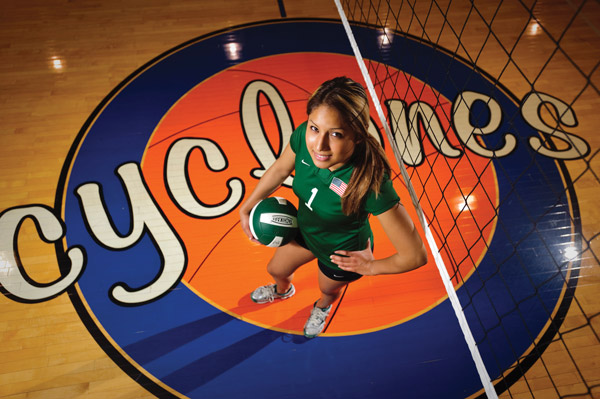
Glenn Carpenter: I work at a college so I shoot everything from receptions, meetings, sports, graduations, portraits, scientific, and nature photography. I work in the marketing department; therefore the bulk of my work is geared to promotion. But anything that contributes to the mission of the college is high on the list. I view the position as a “visual historian.” It is very important to capture what happens at this college every day. We use freelancers for larger events like graduation or installation of a new president, any event that would be unmanageable by the staff shooters. Freelancers are also employed when the staff photographer has a scheduling conflict.
Larry W. Smith: EPA in North America has staff photographers in different locations in the United States, with our director and chief photographer-North America living in Boston. Each staff photographer covers professional sports and major news stories in their area on a daily basis, as well as major events across the US. These are assigned by the director, North America. Freelance assignments are given to local freelancers who we have worked with in the past when a staffer is not available to cover an event or when more than one photographer is needed to cover an event. New freelance photographers are used occasionally when coverage is needed in an area in which we do not have a regular stringer.
Eliot VanOtteren: My primary responsibilities are to provide professional photography to support marketing and communications efforts for Sea Island Company. This can manifest itself in the form of corporate portraits, events, food and beverage, retail, real estate, architecture, lifestyle, aerial, etc. I am responsible for fielding and fulfilling requests for photography production and/or existing images from our library to be used internally and externally for agencies, organizations, editorial outlets, and vendors.
It is my responsibility to oversee the organization and management of our image library of over 50,000 select images spanning more than 80 years, ensuring proper archiving, file formats, organization, and searchability (Peter Krogh’s book, The DAM Book: Digital Asset Management for Photographers is a great resource).
On the production side, I am responsible for all aspects of preproduction, production, and postproduction, including location scouting, scheduling and planning, acquiring talent, props, model releases (I use Easy Release on iPad), pre-lighting, digital capture, image processing, metadata, keywording, retouching, derivative file preparation and delivery, and validated archiving. Lastly, it generally falls under my umbrella to come alongside freelance photography efforts at Sea Island in the role of producer from the resort side. Special projects are often outsourced to established professionals. All video projects are outsourced at this time.
Lucas Jackson: My main responsibility is simple: to get the picture. Our clients and subscribers depend on Reuters to provide images to all corners of the globe. We have to be everywhere and I am part of a global team that has to deliver quality images as fast as possible. Sometimes the images are stand-alone features, sometimes it is content for a story that a reporter and I have been working on over time. No two days are alike. Sometimes you have to cover a movie premiere or concert. Some days you find yourself waiting outside a courthouse for someone like Bernie Madoff. Some days you are covering a sports event like the World Series. But what is constant is the need for speed, accuracy, and quality in our work. News happens live in the digital world now and our clients depend on our pictures to tell the story visually as it happens.
Reuters has an extensive global network of staff photographers and freelancers. Freelancers are invaluable to our work as they can cover areas where we do not have staff photographers, are experts in certain fields or geographical areas, and can provide additional help at busy times and when we are covering large events.

Melina Mara: As the national political staff photographer I cover the White House, Capitol Hill, national campaign trail, and national political issue stories locally and throughout the US. During tough economic times at newspapers, more and more of the issue stories are being given to freelancers. I do the issue stories that we feel, because of their importance and/or better visual opportunity, should be done by staff photographers.
SB: What skills or areas of expertise (other than photography) do you think are most important for career opportunities as a staff photographer?
Mike Bizelli: The ability to get along with all sorts of people is paramount for this job. Some business sense is also vital. Understanding budgets, profit and loss, and lots of salesmanship skills are also needed. Our department charged for our services via a “charge account” system. We could prove our value to the company with those numbers. I think today a degree in computer science/graphics is a plus. But you still have to know how to light a scene, compose, shoot, and process the final image.
Glenn Carpenter: Professionalism and be the friendliest person on staff. The photographer asks people to do what they view as on par with going to the dentist. Most people leave the room when the photographer shows up. You need to be able to put people at ease, get them to relax, and make a great photo, sometimes in 15 minutes. People skills are essential.
Eliot VanOtteren: A staff photographer must maintain an organized and efficient workflow, operate under strict deadlines, and have the ability to clearly evaluate a request and overcome obstacles to execute a project. A staffer must be a team player, have loyalty and commitment to a shared cause, and have strong communication skills across a large network.
Sean D. Elliot: I often encourage students to study something other than photography. Knowledge of wider society is vital. I like to see applications from photographers with backgrounds in history, sociology, and anthropology.
Curiosity is probably the single most important trait. It’s not enough to want to make good photos of what passes in front of one’s lens, one must want to dig deeper, seek understanding, and tell stories from off the beaten path. Those things do not come packaged with the camera and one does not learn them in a darkroom or staring at a computer screen. I think seeking an advanced degree and getting a good liberal arts education is part of that process. You can obtain some of that just through hard work and curiosity. Clearly as the industry evolves the visual journalist must also have multimedia skills, audio and video gathering capabilities. It’s nearly unheard of these days for a newspaper to hire someone without those skills.
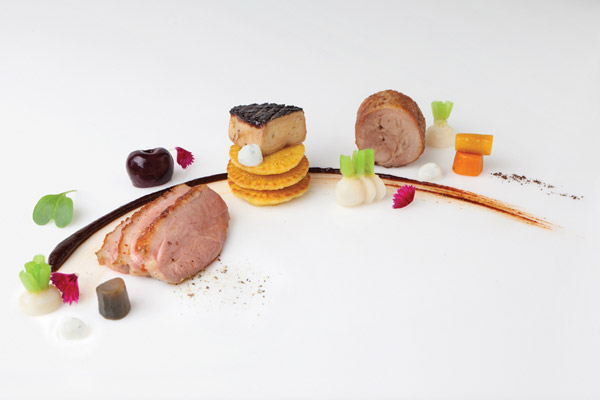
Melina Mara: Your camera bag, metaphorically, should have a collection of skills that aid you daily, such as getting to an assignment early and staying late. You need to get beyond the obvious of the visual coverage, keep yourself open to the nuances and unexpected at beginnings and ends (as well as transitions). Patient persistence on any assignment is a skill that will serve you well; you must never give up and patiently pursue the storytelling moments. You need a unique visual dynamic in your pictures. A photographer who people like to be around will get better access—simply be easy to be around. If you are genuinely well liked, communicate well, and ask good questions you can make subjects understand that you care deeply about your journalistic craft and the story itself. People love to help a journalist with a passion for what they do.
Lucas Jackson: It might sound like a cliché, but I think the most important skills are the obvious ones—spend time learning how to use your equipment so you have total control and confidence in the pictures you are taking. An explosion, celebration, or goal in a football game only happens once, so there are no second chances to capture that moment on camera. It’s also important that you follow the news and know what images are needed to illustrate a particular story. It is often just as important to think your way around a story as it is to shoot your way around it. An editor will always appreciate a photographer who is able to figure out what sort of image will best and most honestly capture what is going on and which helps tell the story.
Larry W. Smith: I really think the biggest thing when working as a staff photographer is being able to get along and work with a team of other photographers with the same company. Do what you are asked without needing an explanation and come back with usable images. Ask questions if you don’t understand something and don’t be afraid to say you don’t know how or understand. Know the business of photojournalism. It is based on facts, truth, and the trust that what we shoot and write is true and real. Don’t manipulate any photos using computer software. Look at other people’s work but don’t try and copy their work; come up with your own style, be creative when the opportunity is there.
Web Resources
To learn more about our interviewees, please visit these sites:
• Mike Bizelli: www.bizelliphotography.com
• Glenn Carpenter: www.morainevalley.edu
• Sean D. Elliot: www.theday.com
• Lucas Jackson: http://blogs.reuters.com/lucas-jackson-/
• Melina Mara: www.washingtonpost.com
• Larry W. Smith: www.epa.eu
• Eliot VanOtteren: www.seaisland.com




